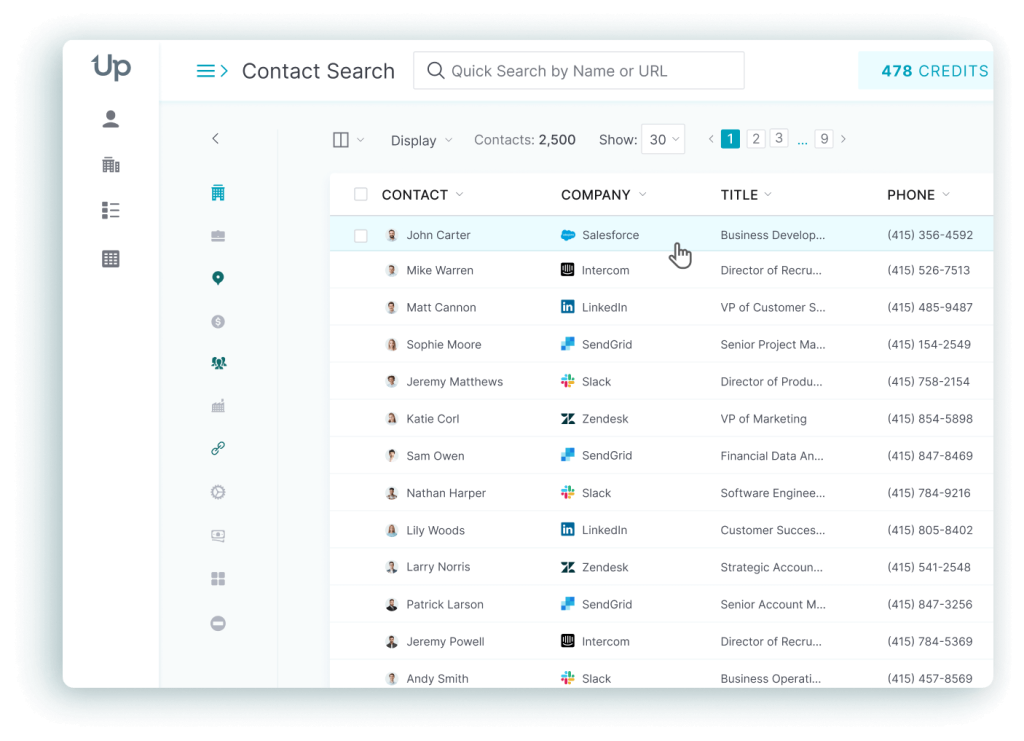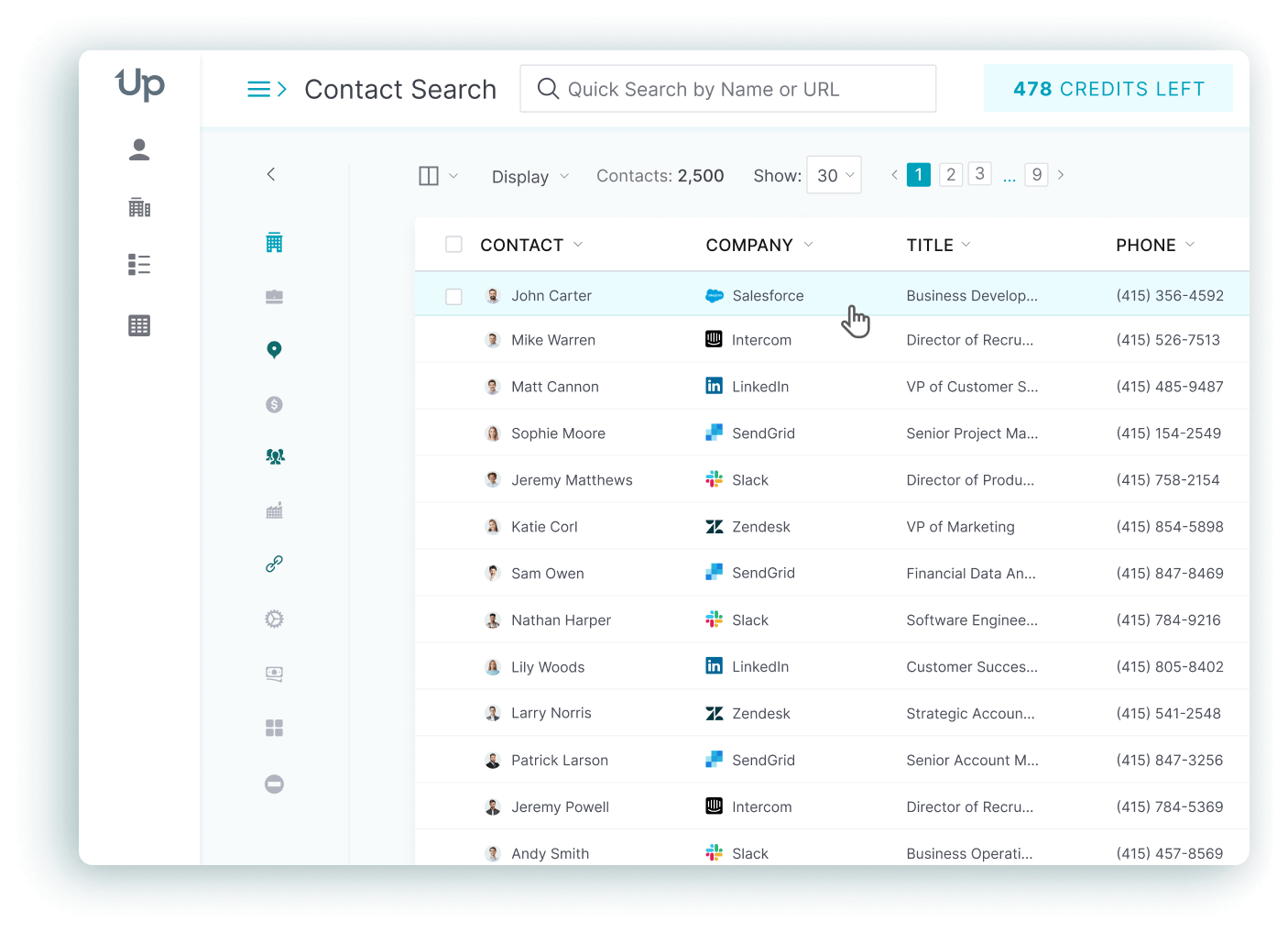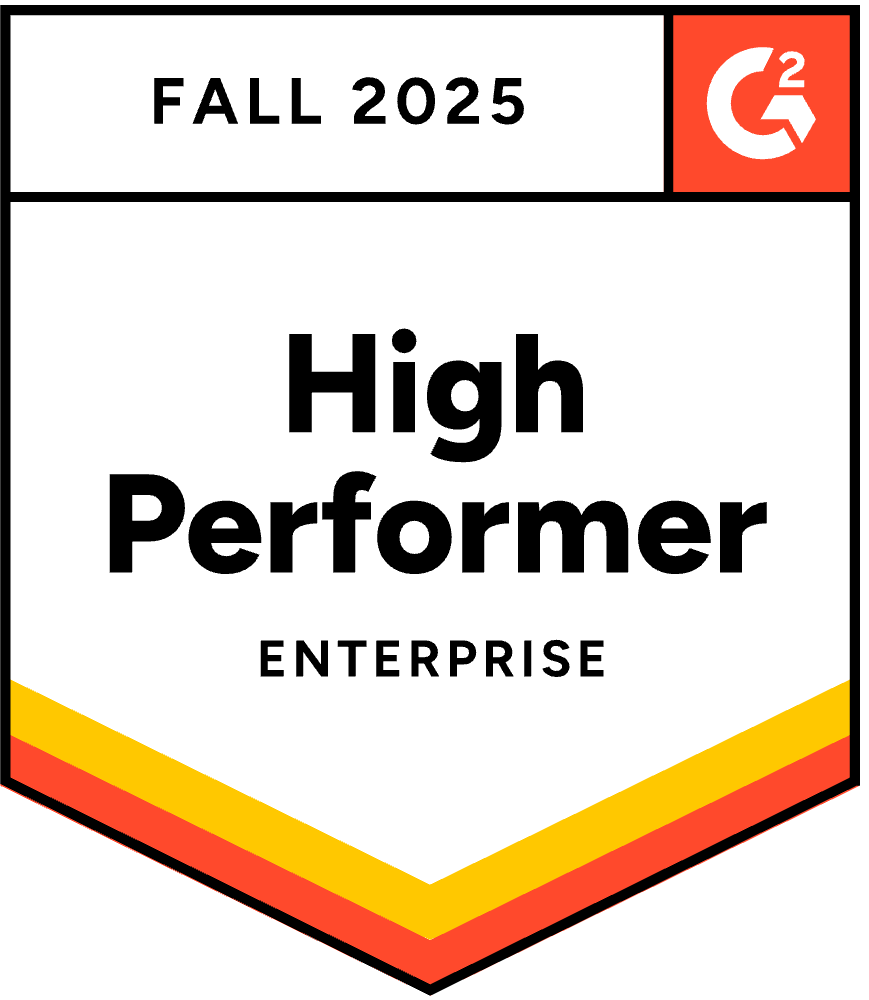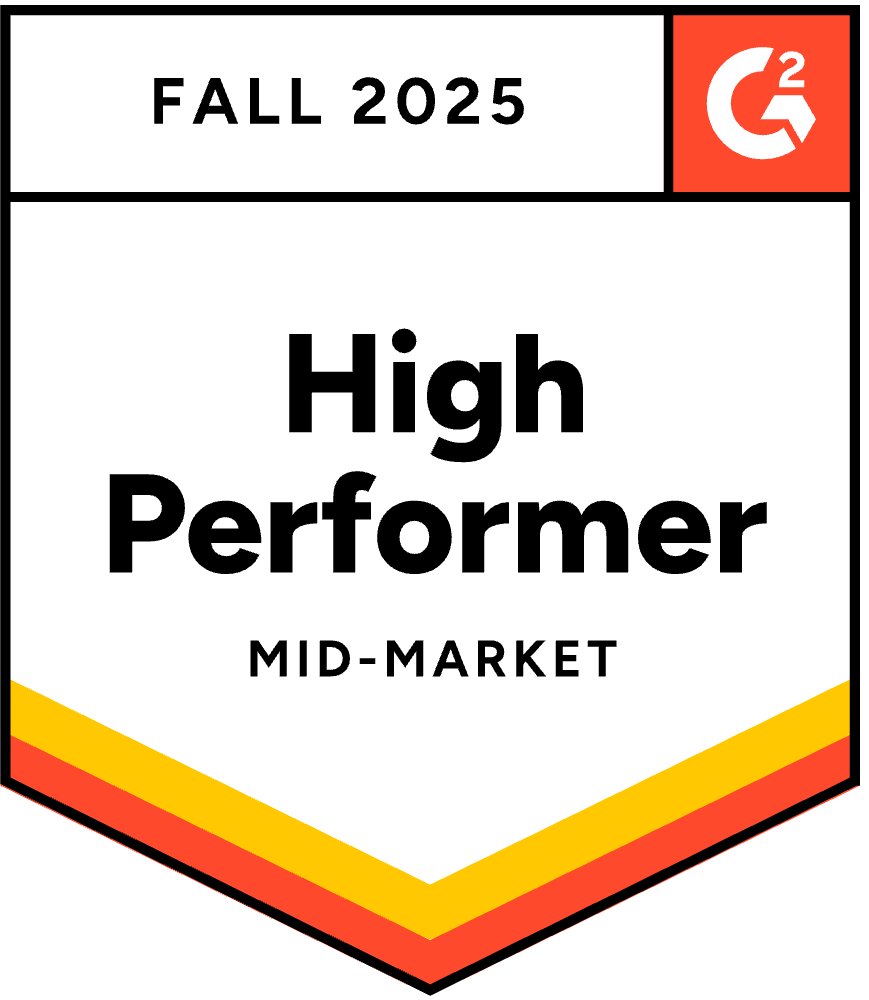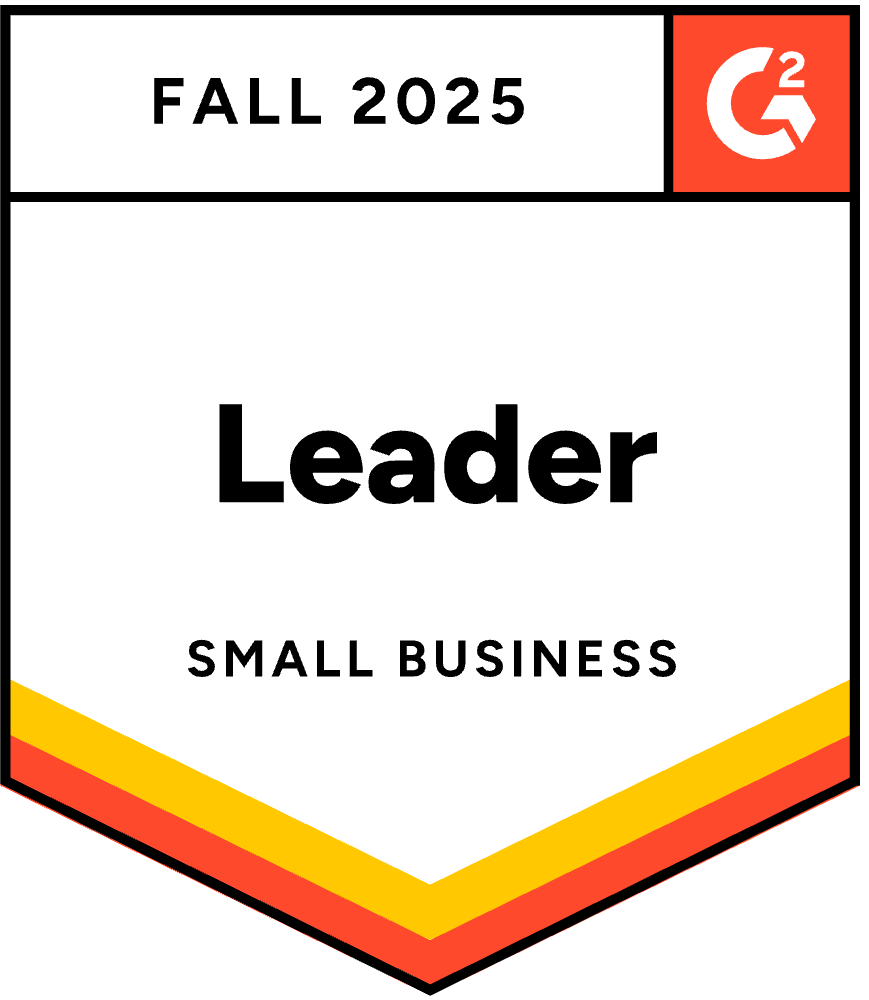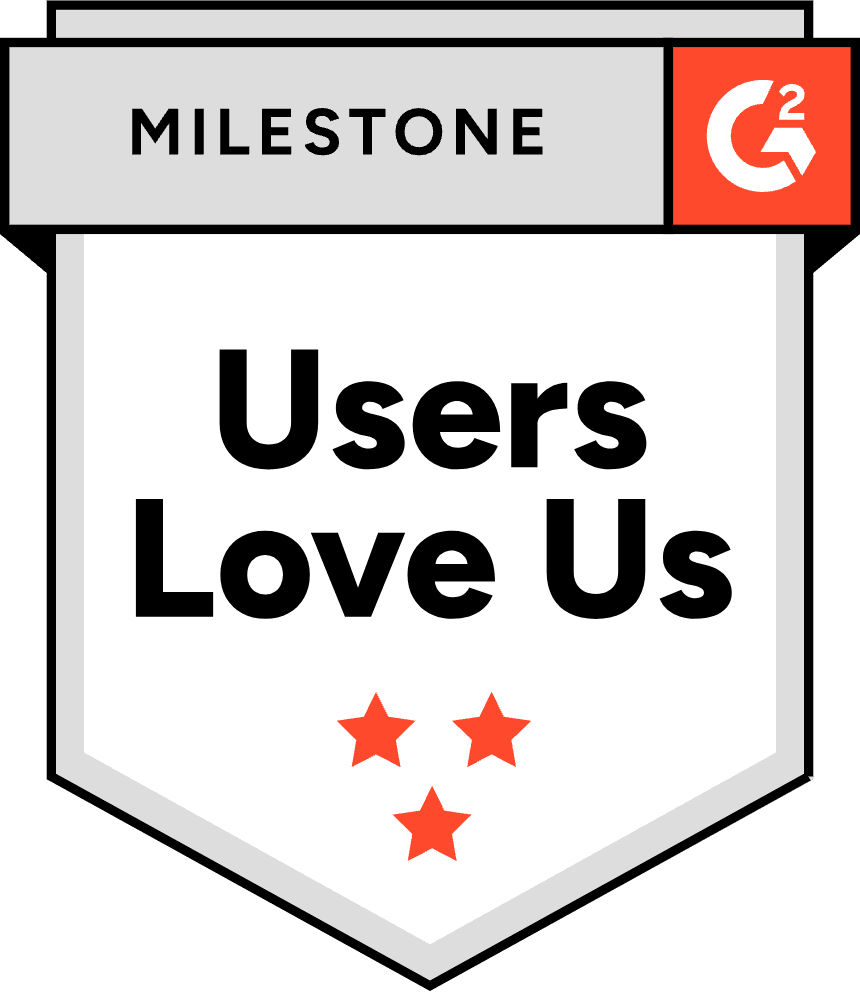I’ve watched thousands of sales teams burn through marketing budgets on potential leads that never convert.
After building UpLead, I learned a hard truth: 90% of “business leads” aren’t qualified leads at all.
They’re names on lists. Email addresses scraped from websites. Contacts who don’t match your Ideal Customer Profile (ICP), show zero intent to buy, and waste your sales team’s time with dead-end conversations.
Real targeted business leads change everything. When your lead generation efforts focus on contacts that match your ICP, show active intent, and can actually be reached, your conversion rates double or triple.
This guide shows you exactly how to generate targeted leads and turn your lead targeting from a numbers game into a precision instrument that delivers more paying customers.
What Are Targeted Leads?
Targeted sales leads are contacts that match your ICP, show active intent to buy, and meet minimum qualification criteria. These quality leads satisfy all three criteria and convert faster than broad, unqualified lists generated through mass marketing approaches.
Targeted vs. generic leads comparison
| Criteria | Targeted Leads | Generic Leads |
|---|---|---|
| List Quality | ICP-matched, intent-qualified | Broad demographic only |
| Outreach Personalization | Role + industry specific | One-size-fits-all messaging |
| Bounce/Complaint Risk | Low (verified, opt-in aware) | High (unverified, cold) |
| Conversion Rate | 3-5% (varies by vertical) | 1-2% typical |
| Sales Cycle | Shorter (pre-qualified) | Longer (education required) |
| Customer Acquisition Cost (CAC) | Lower per deal | Higher due to waste |
Why Do Targeted Leads Improve Return on Investment?
Targeted leads lift ROI because they convert at higher rates and move faster through the sales pipeline. The better your chances of reaching ideal customers who match your target market, the more efficient your marketing spend becomes.
Here’s an easy example:
Scenario A (Generic): Cost per lead of $120. Conversion rate to Sales Qualified Lead (SQL) of 1%. SQL to Closed-Won rate of 20%. CAC = $120/(0.01×0.20) = $60,000 per deal.
Scenario B (Targeted): Cost per lead of $150. Conversion rate of 3%. SQL to Closed-Won rate of 25%. CAC = $150/(0.03×0.25) = $20,000 per deal, which represents a 66% lower customer acquisition cost.
When we audited client lists, the ROI inflection usually happened when teams shifted from volume Marketing Qualified Leads (MQLs) to verified, intent-qualified accounts that showed genuine interest in their solution.
How Do You Generate Targeted Leads? Our 7-Step Framework
Effective targeted lead generation requires systematic execution across seven key areas. Each step builds on the previous one to ensure you’re generating high quality leads that convert into loyal customers.
Step 1: Define an Ideal Customer Profile
Build your ICP from closed-won analysis, not assumptions. Creating an ideal customer profile provides the foundation for effective targeted lead generation and helps your marketing team focus their efforts on valuable leads.
- Analyze existing customers: Export firmographics, technographics, and buying committee roles from the last 12-24 months. Compute win rate and CAC by segment to identify your most profitable customer types.
- Set clear thresholds: Define minimum employee count, industry classifications, and technology requirements. Create a Negative ICP for deal-breakers like sub-$10K budgets.
- Map buying committees: Identify the economic buyer, champion, technical evaluator, and end users across successful deals.
- Prioritize segments: Focus on 2-3 ICP segments initially. Example: Series B SaaS companies with 100-500 employees using HubSpot.
- Review quarterly: Track win rates by segment and adjust targeting strategies as your product evolves.
Step 2: Validate data quality and coverage
Poor data destroys deliverability and wastes Sales Development Representative time on dead conversations. The difference between success and failure often comes down to data quality fundamentals.
| Quality Check | Target Threshold | Why It Matters |
|---|---|---|
| Email verification | Under 2% bounce rate | Protects sender reputation |
| Spam complaints | Under 0.1% (0.3% max) | Prevents inbox blocking |
| Data freshness | Refresh every 90 days | 22% annual decay rate |
| Coverage completeness | Full contact + company data | Enables personalization |
Configure SPF, DKIM, and DMARC authentication. Use custom tracking domains and implement gradual IP warmup procedures. When we enforced verified-only downloads and quarantined accept-all domains, our bounce rate dropped from 3.4% to 0.7% within two weeks.
Step 3: Segment and score targeted leads
Not all qualified leads are created equal. Segment by ICP fit first, then overlay intent signals and role authority using a systematic scoring approach that prevents your sales team from chasing low-probability prospects.
Use a 100-point rubric: Fit (40 points), Intent (35 points), Role (15 points), Timing (5 points), and Risk/Reachability (5 points). Set clear handoff thresholds between marketing and sales teams to ensure consistency.
We separated Fit from Intent scores after discovering that content fans with poor ICP fit were consuming SDR time. This change improved SDR productivity by 23% and helped identify companies likely to convert versus those just consuming content.
Step 4: Detect intent and timing signals
Timing transforms lead generation from guesswork into precision targeting. Prioritize accounts showing recent, relevant intent signals from your website first, then layer in trusted third-party data.
Focus exclusively on signals from the last 30 days. We’ve tested this across thousands of campaigns – older intent signals consistently underperform fresh ones in A/B tests. Strategic relationship development requires engaging prospects when they’re actively researching solutions, not months after their interest has moved elsewhere.
Step 5: Craft targeted messaging and assets
Generic messaging kills conversion rates. Each segment needs content that speaks directly to their specific situation, challenges, and desired outcomes.
Follow the Problem → Value → Proof formula:
- Problem: One primary pain point they’re actively trying to solve
- Value: Clear outcome they’ll achieve with your solution
- Proof: Concrete evidence from similar customers
We stopped leading with feature lists and now lead with job-to-be-done statements plus measurable outcomes. Reply rates improved from 1.8% to 3.2% because prospects immediately understood relevance.
Step 6: Orchestrate multichannel outreach
Single-channel outreach is easily ignored. Execute 7-10 touch sequences over 10-14 days across email, phone, and social media channels. The key is coordinated messaging that builds familiarity without feeling repetitive.
Speed matters for hot leads. Respond within 5 minutes to demo requests and high-intent actions. When we enforced this standard, our meeting booking rate doubled within one week. Cold calls and emails remain effective when timed correctly and provide easy tracking for your sales team.
Step 7: Nurture, qualify and hand-off
Not every lead is ready to buy immediately. Create systematic nurturing programs for prospects who show interest but aren’t ready to engage with sales.
Define clear progression criteria:
- Marketing Qualified Lead: Matches ICP and shows initial interest
- Sales Accepted Lead: SDR accepts and confirms reachability
- Sales Qualified Lead: Meets BANT criteria and shows clear intent
Document Service Level Agreements for response times and create feedback loops between teams. Our SAL definition includes ‘reachable and in-territory’ requirements, which cut recycled leads by 18% and improved sales team focus on viable opportunities.
Lead generation doesn’t have to be all that painful. With UpLead, you can easily connect with high-quality prospects and leads to grow your company.
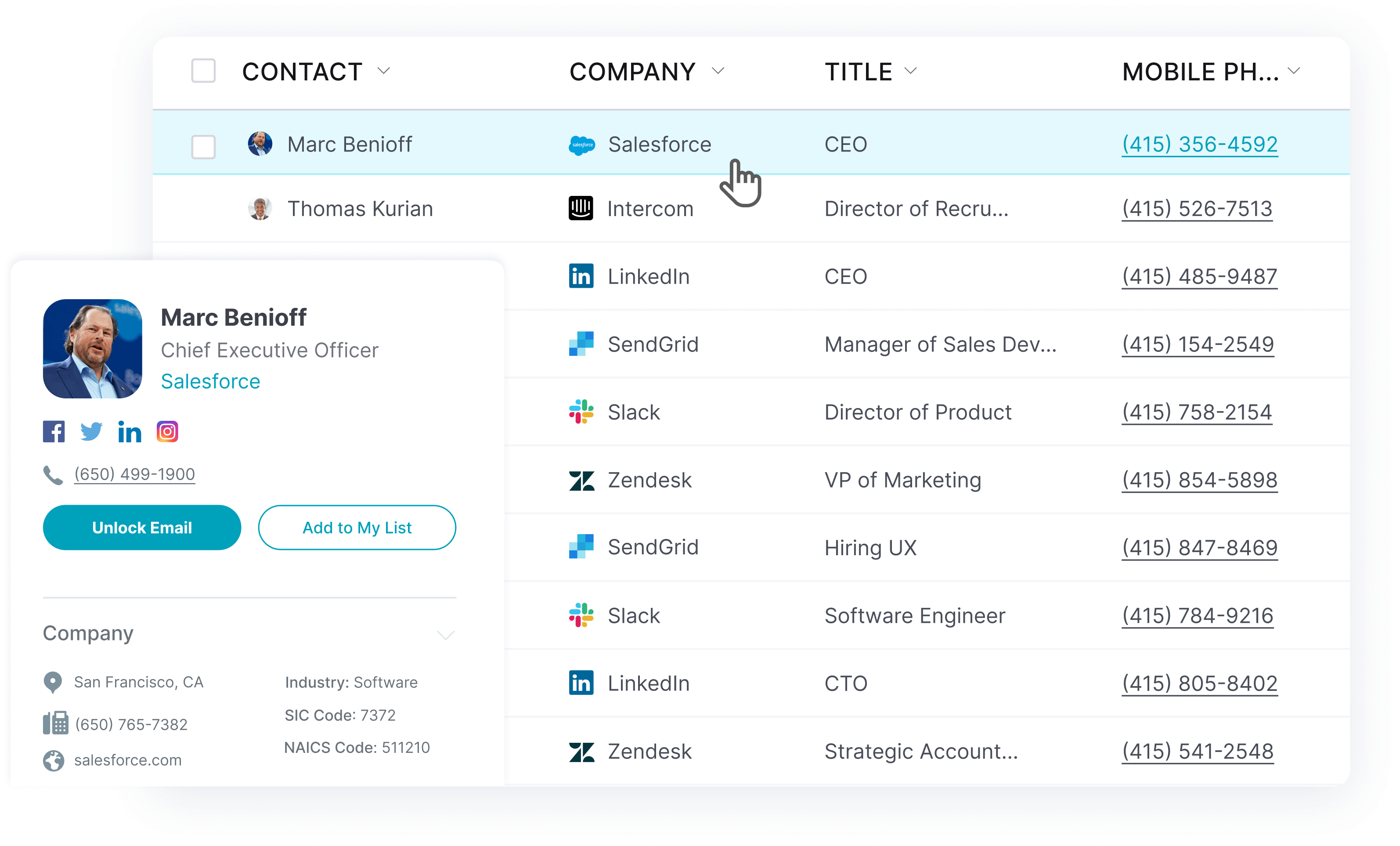
12 Proven Strategies To Source Targeted Leads
These lead generation strategies focus specifically on finding and sourcing more targeted leads that match your ICP, show buying intent, and are ready to engage with your sales process.
1) Use B2B Data Providers
Clean, verified data forms the foundation of every successful targeted lead generation campaign. Without it, even the best outreach strategies fail because you’re contacting the wrong people with outdated information.
The key is starting with ICP-fit contacts who can actually be reached. This means verified email addresses, current job titles, and companies that match your target market profile. Poor data destroys your sender reputation and wastes your sales team’s time on conversations that never convert.
UpLead’s Prospector makes this process straightforward: Select Industry filters → Set Company Size ranges → Choose Technologies your prospects use → Filter by Job Title for decision-makers → Toggle “Verified emails only” before downloading.
Contact search in UpLead
Always test first. Download 50 records, run a small campaign, and confirm bounce rates stay under 2% before scaling up. Use Exclusions to remove existing customers, competitors, and students from your lists.
2) Model customer lookalikes
Your best customers already exist – they’re sitting in your CRM right now. Instead of guessing what good prospects look like, analyze the patterns that make customers valuable and find more companies that match those exact characteristics.
The lookalike process:
Start with your highest LTV accounts from the last 12-24 months. Rank them by revenue and retention, then study the top 10-50 to identify what they share: industry classifications, employee ranges, revenue bands, technology stacks, and growth indicators.
Transform these patterns into search criteria. If your best customers are Series B SaaS companies with 100-500 employees using HubSpot, use UpLead’s filters to find similar prospects. Match Industry Categories, set Employee ranges, select Technologies, and focus on the same buyer roles that typically champion your solution.
This approach consistently outperforms platform-generated lookalikes because it’s based on actual revenue data rather than advertising algorithms. Your internal data shows who actually pays and stays, not just who clicks ads.
3) Monitor buying triggers
Timing beats perfect messaging when prospects aren’t ready to buy. But catch them right after a trigger event – funding rounds, rapid hiring, technology changes, leadership shifts – and suddenly they’re open to conversations about solving problems they couldn’t address before.
- Set up automated alerts for key trigger events at target accounts using Google Alerts or specialized trigger platforms
- Respond immediately when alerts fire – you have a narrow window while the trigger is still fresh and relevant
- Search UpLead by Company Name to find verified contacts in the buying group
- Launch focused 7-day sequences that reference the specific trigger event – don’t pretend it’s coincidental
Important filter: Skip accounts with recent layoff signals. We’ve tested this extensively, and layoff-affected companies rarely convert better than baseline prospects. Save your time for growth signals instead.
4) Apply intent data filters
Intent data reveals which accounts are actively researching solutions like yours right now. Instead of guessing who might be interested someday, you can focus on companies already deep in the buying process.
The challenge with intent data isn’t finding it – it’s knowing what signals actually matter and staying focused on recent activity. Stale intent signals waste time on prospects who’ve already moved on.
UpLead simplifies this process. Select at least 5 intent topics that align with your solution’s pain points and use cases, then apply the Intent filter directly in your search. No need to manage separate intent lists – the filter shows accounts actively researching solutions like yours.
Combine intent filters with Job Function filters to find decision-makers within high-intent companies. Focus exclusively on signals from the last 30 days – we’ve tested this across thousands of campaigns, and older signals consistently underperform fresh ones.
5) Identify anonymous website visitors
Every day, ICP-fit companies visit your website, browse your content, and leave without identifying themselves. These are warm prospects who already know your brand and have shown genuine interest – but you’re letting them slip away.
Visitor identification technology solves this by revealing which companies are browsing your site, what pages they’re viewing, and how long they’re engaging with your content.
Setup checklist:
- ✅ Install visitor identification that filters out ISPs and bots
- ✅ Set qualification rules for high-intent pages (pricing, docs, demos)
- ✅ Require 45+ seconds dwell time and 2+ pageviews
- ✅ Search UpLead by Company Name for qualified accounts
- ✅ Launch same-day sequences referencing specific pages viewed
Our meeting rates doubled when SDRs started saying things like “I noticed you were reviewing our SOC 2 guide yesterday” or “saw you used our pricing calculator this morning.”
6) Leverage partner co-selling channels
Partner co-sell programs provide something cold outreach can’t: pre-qualified opportunities with built-in budget and authority. If you sell into Microsoft or AWS ecosystems, these partnerships can become your highest-converting lead source.
Co-sell works because partner sales teams introduce you to accounts that already trust the platform and have allocated budget for ecosystem solutions. You’re not starting from zero – you’re joining an existing sales conversation.
Microsoft requirements:
- Co-sell ready status
- Azure IP co-sell eligible designation
- Active marketplace listing

(Source: learn.microsoft.com)
AWS requirements:
- APN Advanced Consulting Partner certification
- Relevant competency validation
- Transactable marketplace offers
Use UpLead’s Technologies filter to identify target accounts already using these platforms heavily. Search for “Microsoft Azure,” “Office 365,” “AWS,” or specific tools within these ecosystems for intelligent conversation starters.

7) Harvest review sites and communities ethically
Review platforms like G2 and Capterra are filled with in-market buyers actively researching solutions. Unlike cold prospects, these people are already in buying mode – they’re comparing options, reading reviews, and making decisions.
The key word here is “ethically.” Reddit users and G2 browsers have finely tuned promotional radar.
| ✅ Do This | ❌ Don’t Do This |
|---|---|
| Provide genuine value and expertise | Lead with product pitches |
| Answer questions thoroughly | Drop links without context |
| Share neutral, helpful resources | Promote only your solution |
| Ask all customers for reviews | Cherry-pick only promoters |
| Disclose any incentives clearly | Hide promotional relationships |
Track G2 buyer intent signals to identify accounts researching your category. The goal isn’t gaming the system – it’s building authentic presence where your prospects naturally research solutions.
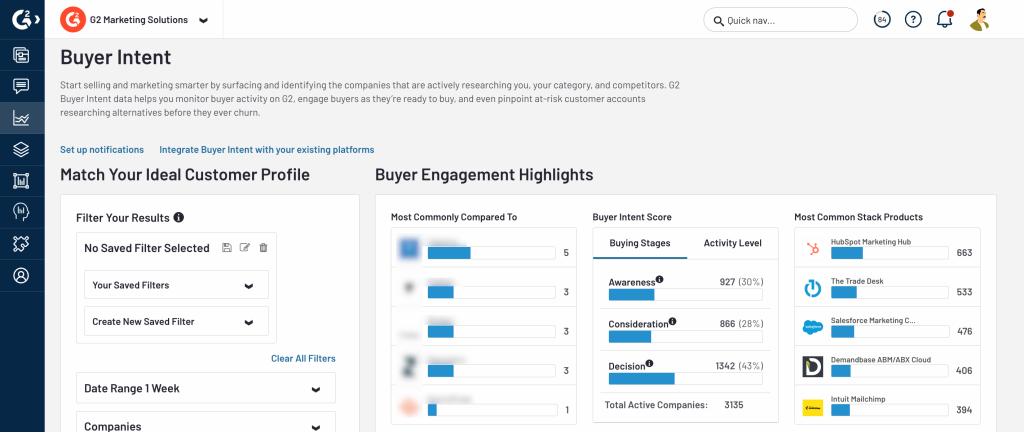
(Source: documentation.g2.com)
8) Request referrals at success moments
Referrals consistently generate higher-value, longer-retained customers than any other lead source. Yet most companies approach referrals randomly instead of systematically, missing opportunities when customer satisfaction peaks.
Perfect timing moments:
- 🚀 Successful go-live implementations
- 📝 Contract renewals
- 📊 Hitting key metrics they care about
- 💬 Receiving positive feedback from their teams
Make referrals effortless by providing forwarding templates and specific intro prompts. Give customers three ways to think about ideal referrals: same industry and company size, same technology stack, or facing similar challenges they just solved.
When customers name potential accounts, immediately use the UpLead Contact Search to find verified decision-maker contacts. This lets you move quickly on warm introductions instead of waiting for customers to make connections that may never happen.
9) Host targeted webinars and virtual events
Webinars attract prospects who already care about the problems you solve. Unlike cold outreach, attendees voluntarily give you their time and attention because your topic addresses something they’re actively trying to figure out.
Topic selection
Make topics laser-focused on specific outcomes rather than generic overviews. “Cut first-response time by 30% in 60 days” pulls in operations managers with specific metrics problems. “Intro to customer support software” attracts people who may not even be in market yet.
Session structure
40-45 minutes total: Problem framing → Live workflow demos with real screens → One concrete case study with numbers → Q&A → Single, specific CTA like “Get the implementation checklist.”
Follow-up strategy
Export attendee lists and use UpLead’s Data Enrichment to append missing firmographics and technographics. This reveals which attendees match your ICP and helps prioritize follow-up. People who asked questions get direct calendar links. Silent attendees get nurture sequences. No-shows get replays plus one useful resource.
10) Optimize content for problem intent
Organic search captures prospects during active research phases when they’re typing specific problems into Google. Unlike social media scrollers, these visitors have clear intent and immediate needs.
Keyword categories to target:
- Solution-focused: “How to reduce first-response time,” “SOC 2 audit evidence checklist”
- Comparison terms: “Zendesk vs. Intercom for SLA management,” “HubSpot integration playbook”
- Process queries: “Sales pipeline coverage formula,” “Customer onboarding checklist template”
Structure content to satisfy search intent immediately. Lead with 2-3 sentence answers that directly address the query, then provide detailed, actionable playbooks with screenshots and real examples.
Convert visitors with gated resources that signal active projects: implementation SOPs, calculation templates, audit checklists. Use UpLead enrichment on form submissions to instantly add firmographics and technographics, verify contacts, and route ICP-matched leads directly to sales while non-ICP contacts enter nurture campaigns.
11) Execute LinkedIn outreach
LinkedIn works when you invest time in building genuine relationships rather than blasting connection requests to everyone with a relevant job title. The platform rewards quality interactions and penalizes obvious prospecting.
Start with intelligent targeting in Sales Navigator: filter by industry, company size, funding stage, and technology indicators that match your ICP. But don’t stop there – use the UpLead Chrome Extension to verify email addresses and phone numbers while browsing profiles.
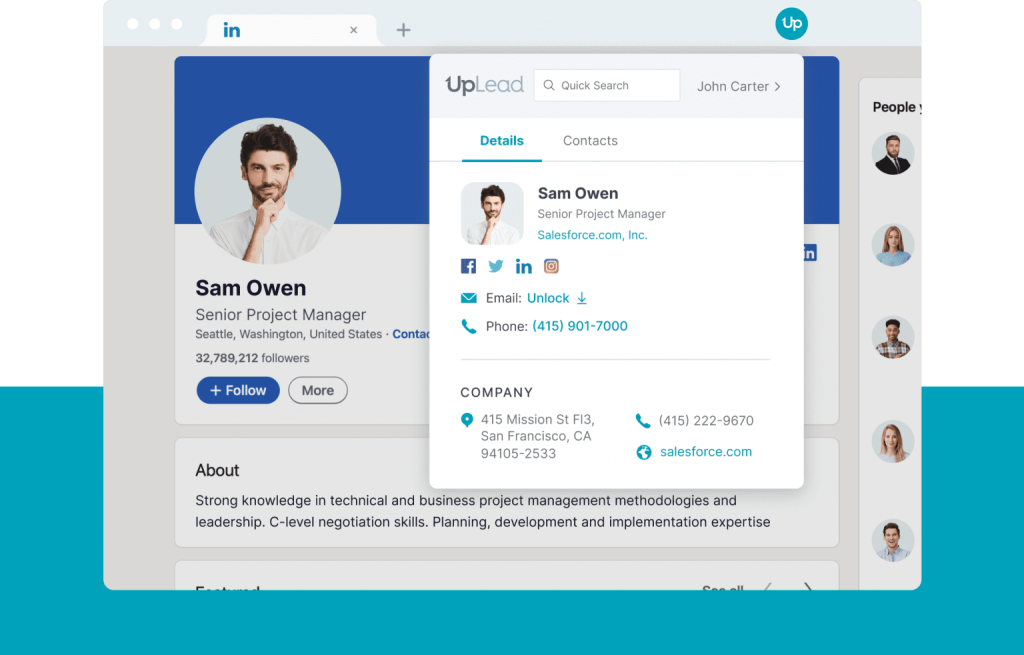
The 7-touch sequence:
- Thoughtful comment on their content (insights, not generic praise)
- Connection request with brief, specific reason
- Personalized email referencing their recent activity
- Phone call/voicemail with problem-focused message
- Relevant case study share from similar company
- Value-add email with useful resource
- Professional breakup message with future door open
Keep every touchpoint problem-focused with one proof point and one clear, easy call-to-action.
12) Run paid ads
Keep PPC straightforward: show up for the terms buyers actually use, make your ad and page say the same thing, block bad clicks, and track what happens after the click so you can spend on what drives revenue.
Simple B2B PPC blueprint:
| Do this | Why it helps |
|---|---|
| Group keywords tightly by theme (your product/service, industry use cases) | Improves ad relevance and Quality Score when ads match the search. |
| Match ad copy and landing page to the exact keywords | Consistent message → better user experience and conversions. |
| Add negative keywords (e.g., “jobs”, “free”, “definition”) | Stops irrelevant clicks and protects budget. |
| Track real outcomes (calls, demos, deals) and import them back into ads | Lets the platform optimize to sales-quality results, not just form fills. |
| Retarget site visitors and uploaded account lists on LinkedIn | Brings back engaged companies and reaches named accounts. |
Build a few small campaigns around core themes (brand, product/service category, “for <industry/function>”). Use phrase/exact match for control, review search terms weekly, and keep adding negatives. Make one clean landing page per theme with the same headline as your ad, one clear CTA, and quick proof (logos, quotes, or numbers).
Set up basic conversion tracking, then import offline milestones from your CRM (qualified lead, opportunity, revenue) so bidding learns what good looks like. Add LinkedIn’s Insight Tag to retarget visitors and to activate Matched Audiences from your account lists for simple ABM.
Why Choose UpLead For Targeted Leads?
UpLead combines large coverage, 95% accuracy guarantee with real-time verification, and precise targeting filters including technographics and intent data to help you target high potential leads efficiently.
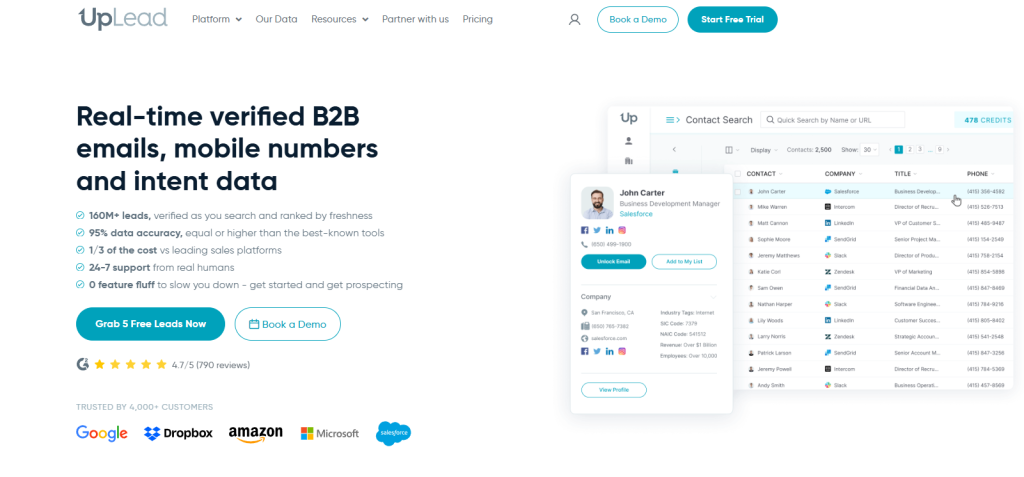
- Coverage and freshness: 160M+ verified contacts with 27K+ tracked technologies across 200+ countries
- Accuracy guarantee: 95% accuracy with real-time verification at download to ensure lead quality
- Targeting precision: 50+ firmographic and technographic filters for ICP matching
- Intent and enrichment: Intent data for in-market prioritization plus enrichment API for generating leads from existing data
Lead generation doesn’t have to be all that painful. With UpLead, you can easily connect with high-quality prospects and leads to grow your company.

FAQs: Quick Answers About Targeted Leads
Below are the most frequently asked questions about targeted lead generation and effective lead generation strategies.
Yes, cold-emailing B2B contacts is legal in most jurisdictions with proper compliance. In the US, follow CAN-SPAM requirements (accurate headers, physical address, unsubscribe mechanism), while UK/EU regulations under PECR allow corporate subscriber emails with proper identification and opt-out options.
Avoid buying leads for bulk email campaigns as most ESPs ban purchased lists and deliverability suffers. If you license B2B data, use it only for one-to-one outreach via phone or LinkedIn with proper legal documentation and real-time verification.
Keep spam complaints at 0.1% or lower (0.3% maximum before major provider blocks) and bounce rates at 2% or lower. These thresholds are critical for Gmail and Yahoo’s bulk sender requirements that impact inbox placement.
B2B buying groups typically involve 6 to 10 stakeholders with different roles: economic buyers, technical evaluators, end users, and champions. Your outreach strategy must address each role’s specific needs rather than using generic messaging.
Re-verify contact lists before every major send and re-enrich quarterly since B2B data decays at 2%+ monthly (22% annually). Always verify lists unused for 30+ days before launching campaigns to maintain deliverability and ensure you’re reaching potential leads who are still at their companies.
Use B2B data providers like UpLead to build verified prospect lists with 95% accuracy, then layer on intent signals, buying triggers, and lookalike modeling based on your highest-value customers. Combine this foundation with website visitor identification, partner co-sell programs, and systematic referral requests to create multiple sources of qualified prospects.
Create SEO-optimized content targeting problem-focused keywords, host webinars addressing specific pain points, and engage authentically in review communities and LinkedIn to build relationships before making asks. Systematically request referrals at customer success moments and participate in industry communities by providing genuine value rather than promotional pitches.
What Should You Remember About Targeted Leads?
Targeted leads equal ICP fit × intent signal × reachability. Market research and data verification protect deliverability and revenue. Measure Pipeline Velocity and conversion stages, not vanity metrics. Review and refresh your data quarterly while keeping complaint rates ≤ 0.1% to ensure your marketing efforts generate valuable insights.
With UpLead, you can focus on generating targeted business leads and identify companies that fit your ideal customer profile. Use powerful targeting criteria for firmographic, demographic, and technographic data points to analyze existing customers and build better customer relationships. Transform your lead generation strategies with UpLead’s business intelligence tools that help increase brand awareness and deliver sales professionals the quality leads they need.
Next Steps: Build Your Targeted-Lead Plan This Week
Give yourself 5 days to ship a compliant, high-intent micro-campaign that generates leads and validates your targeting strategies.
5-day sprint to launch
- Day 1: Confirm ICP and personas, set one clear offer
- Day 2: Build list in UpLead with firmographic and technographic filters, verify on export
- Day 3: Set up compliant sending infrastructure (SPF, DKIM, DMARC, unsubscribe, suppression lists)
- Day 4: Write 4-touch sequence triggered by signals. Include call and LinkedIn touches
- Day 5: Launch to small cohort, monitor complaints and bounces. Expand only if ≤ 0.1% complaints and ≤ 2% bounces
Outputs you’ll have: List CSV, sequence copy, call script, dashboard with complaint and bounce monitoring, and velocity calculator template for measuring results.

